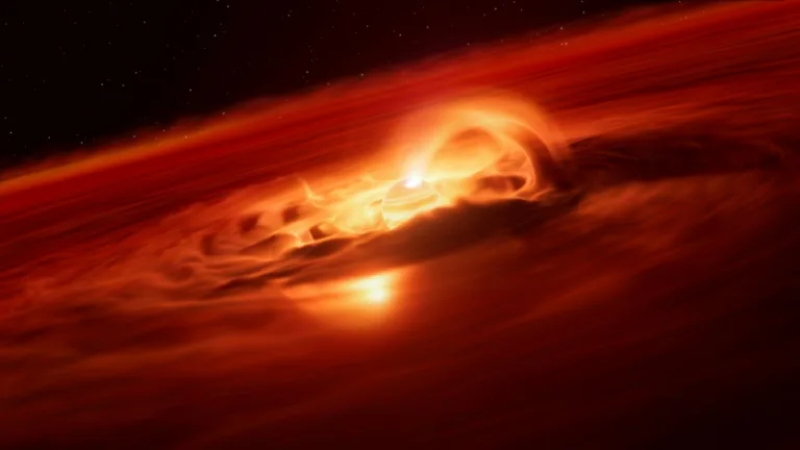- অতিথি পাখির বিচরণ আর দুষ্টুমিতে নান্দনিক হয়ে উঠেছে কুয়াকাটার চর বিজয় |
- Remittance inflow exceeds $632 million in first six days of Dec |
- 18 migrants die as inflatable boat sinks south of Greek island of Crete |
- TIB for polls manifesto vows to curb misuse of powers and religion |
- Khaleda now not fit for travelling: Medical Board |
Rogue Planet Spotted Devouring Matter Like a Star

Photo: Yahoo
Astronomers have observed a mysterious "rogue" planet consuming six billion tonnes of gas and dust per second — an unprecedented rate that blurs the line between planets and stars.
Unlike Earth and other planets in our solar system, rogue planets float freely through space, untethered to a star. Scientists estimate there could be trillions in the galaxy, but they are difficult to spot as they drift silently through darkness.
“These objects are neither a star nor a proper planet,” said Alexander Scholz, an astronomer at the University of St Andrews. “Their origin remains an open question: are they the lowest-mass objects formed like stars, or giant planets ejected from their birth systems?”
The newly observed planet, Cha 1107-7626, lies roughly 620 light years away in the constellation Chamaeleon. With a mass five to ten times that of Jupiter, the planet is only one to two million years old and still in its infancy.
Cha 1107-7626 grows by sucking in matter from a surrounding disc, a process called accretion. In August last year, astronomers recorded an astonishing surge in its growth, devouring matter at six billion tonnes per second — eight times faster than just months earlier. “This is the strongest accretion episode ever recorded for a planetary-mass object,” said lead researcher Victor Almendros-Abad.
By analysing the planet’s light before and during the accretion event, scientists found magnetic activity played a key role in driving matter toward it. Water vapour was also detected in the disc during the episode — a phenomenon previously seen only in stars.
“This discovery shows that some objects comparable to giant planets form like stars, from contracting clouds of gas and dust with their own discs, and go through growth episodes similar to newborn stars,” said Ray Jayawardhana of Johns Hopkins University.
Despite these star-like behaviours, Cha 1107-7626 will never host fusion reactions in its core and will gradually cool over time, much like other planets. Amelia Bayo, another study co-author, described the findings as “awe-inspiring” and said they invite new questions about the early stages of worlds beyond our own.
Observations were made using the European Southern Observatory’s Very Large Telescope in Chile, with supporting data from the James Webb Space Telescope.

